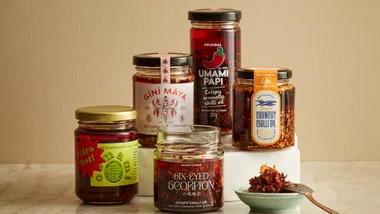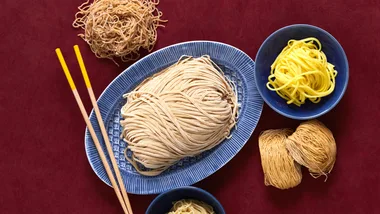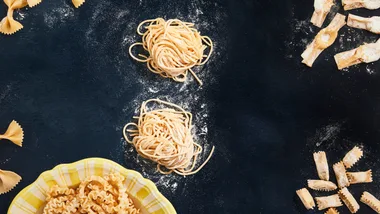Mascarpone, the spreadable, whiskable, versatile Italian cream cheese, is simple to make. Unlike hard cheeses, it requires no difficult-to-obtain culture or humidity-controlled storage area, and the process of transforming the simplest of dairy ingredients into something luscious is immensely satisfying.
Traditionally, raw milk is the starting point for making mascarpone. The milk is left to stand overnight at cool room temperature, during which time the cream naturally rises to the surface of the milk and acquires a slight tartness from the bacteria that grow spontaneously in the milk. The resulting cultured cream is then mixed with an equal quantity of whole milk, heated, acidified (usually with tartaric acid), and drained.
A more practical method, given that raw milk isn’t available for sale in Australia, is to use natural cream with no thickening agents, as we’ve done here. The resulting mascarpone doesn’t have the flavour of cultured cream, but it nevertheless reflects the characteristics of the cream used, whether it’s grassy or more neutral, organic or conventional, from King Island or from the local supermarket.
We recommend using heavy cream, because its fat content (45 per cent) will result in a thick, rich mascarpone. You could use a regular pouring cream with a fat content of 35 per cent, but the result won’t be as rich, and you’ll need to spend more time draining the whey to achieve the thick consistency you’re after.
To acidify, we’ve used lemon juice. Other recipes call for vinegar or tartaric acid – they all work, although the proportions needed are a little different.
Gently heat the cream to 80C, and then add the lemon juice, enough to coagulate the cream but not so much as to result in sourness. Leave the mixture to stand at room temperature to cool gently and then refrigerate it until the mixture coagulates and resembles large, soft, gel-like curds.
Drain the mixture in a sieve lined with four layers of muslin placed over a bowl. This is a gentle way of separating the thick curds from the watery whey, and results in mascarpone of spoonable consistency. The longer it drains, the thicker the mascarpone will be, but overnight is usually sufficient. By making mascarpone yourself, you can control the texture of the finished product: a lighter version is nice for a tiramisù or a fruit tart filling, while a richer, creamier style is perfect for stirring through a wild mushroom risotto.
As there are no preservatives involved, homemade mascarpone is highly perishable and will turn sour after only a few days, so start your cheese-making three days before you need the mascarpone, and serve it within two days. Not that this is likely to be a problem – it’ll be almost impossible to resist the urge to eat it straight away.
Ingredients
Method
Main
Note You’ll need to begin this recipe 2 days ahead; it makes 2 cups.
Notes










